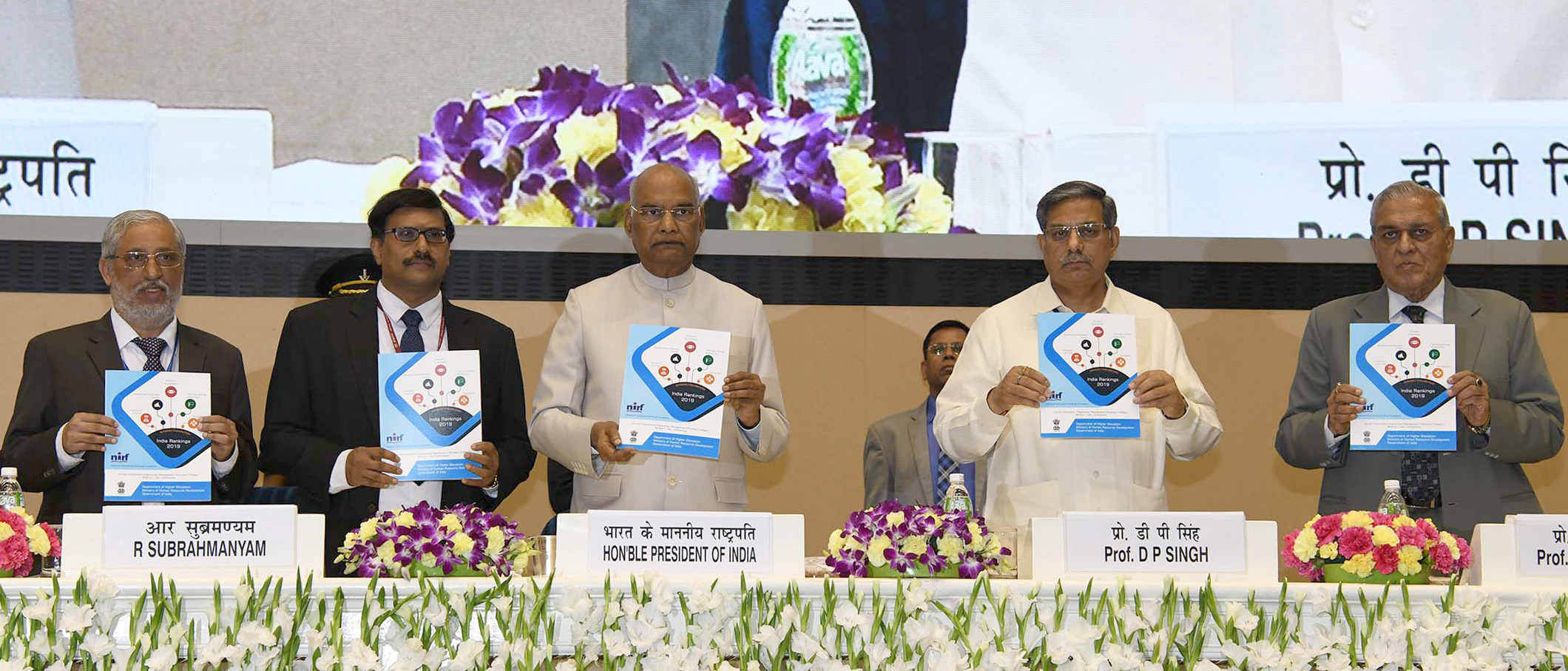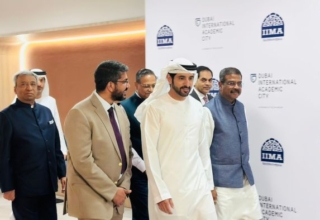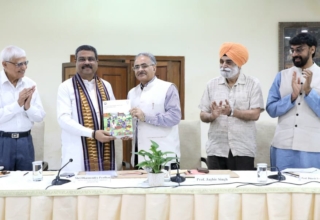
The fourth edition of the NIRF (National Institutional Ranking Framework) (NIRF) Rankings by the union Ministry for Human Resources Development was released on April 8 under a preset scheduled publishing calendar . IIT-Madras has come on the top in the overall NIRF Rankings 2019 and is followed by IISc and IIT-Delhi in second and third position respectively. In university rankings category, Indian Institute of Science, Bangalore at number one and Jawaharlal Nehru University (JNU) New Delhi at No 2 are listed as the two top universities. Several other central, state and private universities have done well to get into the top 100 rankings.
On expected lines country’s IITs have bagged the top rankings in engineering stream. Medical continues to be dominated by AIIMS, New Delhi at top. National Law School of India University, Bengaluru is the top ranking law institution in the country while as Jamia Hamdard, New Delhi has maintained its number one ranking in pharmacy. Six out of top 10 degree colleges are from Delhi and includes Mrinda House at the top.

Top 10 Overall Rankings
| Indian Institute of Technology Madras, Chennai Tamil Nadu | 1 |
| Indian Institute of Science, Bengaluru Karnataka | 2 |
| Indian Institute of Technology Delhi Delhi | 3 |
| Indian Institute of Technology Bombay, Mumbai Maharashtra | 4 |
| Indian Institute of Technology Kharagpur West Bengal | 5 |
| Indian Institute of Technology Kanpur Uttar Pradesh | 6 |
| Jawaharlal Nehru University, New Delhi Delhi | 7 |
| Indian Institute of Technology Roorkee Uttarakhand | 8 |
| Indian Institute of Technology Guwahati Assam | 9 |
| Banaras Hindu University, Varanasi Uttar Pradesh | 10 |
Top 10 Universities
| Indian Institute of Science, Bengaluru Karnataka | 1 |
| Jawaharlal Nehru University, New Delhi Delhi | 2 |
| Banaras Hindu University, Varanasi Uttar Pradesh | 3 |
| University of Hyderabad, Hyderabad Telangana | 4 |
| Calcutta University, Kolkata West Bengal | 5 |
| Jadavpur University, Kolkata West Bengal | 6 |
| Anna University, Chennai Tamil Nadu | 7 |
| Amrita Vishwa Vidyapeetham, Coimbatore Tamil Nadu | 8 |
| Manipal Academy of Higher Education, Manipal Karnataka | 9 |
| Savitribai Phule Pune University, Pune Maharashtra | 10 |
Top 10 Engineering colleges
| Indian Institute of Technology Madras, Chennai Tamil Nadu | 1 |
| Indian Institute of Technology Delhi Delhi | 2 |
| Indian Institute of Technology Bombay, Mumbai Maharashtra | 3 |
| Indian Institute of Technology Kharagpur West Bengal | 4 |
| Indian Institute of Technology Kanpur Uttar Pradesh | 5 |
| Indian Institute of Technology Roorkee Uttarakhand | 6 |
| Indian Institute of Technology Guwahati Assam | 7 |
| Indian Institute of Technology Hyderabad Telangana | 8 |
| Anna University, Chennai Tamil Nadu | 9 |
| National Institute of Technology Tiruchirappalli Tamil Nadu | 10 |
Top 10 Management Colleges
| Indian Institute of Management Bangalore, Bengaluru Karnatak | 1 |
| Indian Institute of Management Ahmedabad Gujarat | 2 |
| Indian Institute of Management Calcutta, Kolkata West Bengal | 3 |
| Indian Institute of Management Lucknow Uttar Pradesh | 4 |
| Indian Institute of Management Indore Madhya Pradesh | 5 |
| Indian Institute of Technology Kharagpur West Bengal | 6 |
| Xavier Labour Relations Institute, Jamshedpur Jharkhand | 7 |
| Indian Institute of Management Kozhikode Kerala | 8 |
| Indian Institute of Technology Delhi Delhi | 9 |
| Indian Institute of Technology Bombay, Mumbai Maharashtra | 10 |
Top 5 Pharmacy colleges
| Jamia Hamdard, New Delhi Delhi | 1 |
| Panjab University, Chandigarh Chandigarh | 2 |
| National Institute of Pharmaceutical Education and Research, Mohali Punjab | 3 |
| Institute of Chemical Technology, Mumbai Maharashtra | 4 |
| Birla Institute of Technology and Science, Pilani Rajasthan | 5 |
Top 10 Degree Colleges
| Miranda House, Delhi Delhi | 1 |
| Hindu College, Delhi Delhi | 2 |
| Presidency College, Chennai Tamil Nadu | 3 |
| St. Stephen`s College, Delhi Delhi | 4 |
| Lady Shri Ram College for Women, New Delhi Delhi | 5 |
| Loyola College, Chennai Tamil Nadu | 6 |
| Shri Ram College of Commerce, Delhi Delhi | 7 |
| Rama Krishna Mission Vivekananda Centenary College, Rahara West Bengal | 8 |
| Hans Raj College, Delhi Delhi | 9 |
| St. Xavier`s College, Kolkata West Bengal | 10 |
Top 10 Medical
| All India Institute of Medical Sciences, New Delhi Delhi | 1 |
| Post Graduate Institute of Medical Education and Research, Chandigarh Chandigarh | 2 |
| Christian Medical College, Vellore Tamil Nadu | 3 |
| Sanjay Gandhi Postgraduate Institute of Medical Sciences, Lucknow Uttar Pradesh | 4 |
| Amrita Vishwa Vidyapeetham, Coimbatore Tamil Nadu | 5 |
| Banaras Hindu University, Varanasi Uttar Pradesh | 6 |
| Kasturba Medical College, Manipal Karnataka | 7 |
| Jawaharlal Institute of Post Graduate Medical Education and Research, Puducherry Puducherry | 8 |
| Institute of Liver and Biliary Sciences, New Delhi Delhi | 9 |
| King George`s Medical University, Lucknow Uttar Pradesh | 10 |
Top 10 in Law Education
| National Law School of India University, Bengaluru Karnataka | 1 |
| National Law University, New Delhi Delhi 2 | 2 |
| Nalsar University of Law, Hyderabad Telangana | 3 |
| Indian Institute of Technology Kharagpur West Bengal 4 | 4 |
| The West Bengal National University of Juridical Sciences, Kolkata West Bengal | 5 |
| National Law University, Jodhpur Rajasthan | 6 |
| Symbiosis Law School, Pune Maharashtra | 7 |
| Jamia Millia Islamia, New Delhi Delhi | 8 |
| Gujarat National Law University, Gandhinagar Gujarat | 9 |
| The Rajiv Gandhi National University of Law, Patiala Punjab | 10 |
Top 5 Architecture Colleges
| Indian Institute of Technology Kharagpur West Bengal | 1 |
| Indian Institute of Technology Roorkee Uttarakhand | 2 |
| National Institute of Technology Calicut, Kozhikode Kerala | 3 |
| School of Planning and Architecture New Delhi Delhi | 4 |
| College of Engineering, Thiruvananthapuram Kerala | 5 |
In all 3127 unique applicant institutions under various categories / domains were considered for publishing top 100 rankings in Overall, University and Colleges categories whereas ranking was kept restricted to only 15 to 75 institutions in all other domain-specific rankings (Architecture, Pharmacy, Law, Management and Medical) because of reliability of data. However, number of engineering institutions that are ranked this year has been increased from 100 to 200
For evaluation, besides, sourcing data on various parameters from applicant institutions, third party sources of data have also been used, wherever possible. Scopus (Elsevier Science) and Web of Science (Clarivate Analytics) were used for retrieving publications and citation data. Derwent Innovation was used for retrieving data on patents. Data retrieved from these sources was shared with the institutions for transparency with a provision to give their inputs in case they are not agreeable to publications and citations data from third party sources.
The ranking framework evaluates institutions on five broad generic groups of parameters, i.e. Teaching, Learning and Resources (TLR), Research and Professional Practice (RP), Graduation Outcomes (GO), Outreach and Inclusivity (OI) and Perception (PR). Ranks are assigned based on total sum of marks assigned for each of these five broad groups of parameters.
This year, in addition to normalizing publications, citations have also been normalized by number of faculty in Overall, Engineering, Pharmacy and Medical categories, from this year onwards; Number of beds in a medical institutions / colleges has also been incorporated as a sub-parameter for “Footprints of Professional Practice” for ranking of Medical institutions; Article published in 50 journals identified by Financial Times (FT50) is incorporated as an additional subparameter of RP for ranking of Management institutes. Number of papers that appeared in the top 25 percentile of cited papers in the world (instead of India) for a given discipline was taken as sub-parameter for evaluating “Research and Professional Practice” ; and Data Capturing System (DCS), Feedback System and the Perception Capturing System were developed for online capturing of data from applicant institutions, feedback from public and institutional perception (from Peers and Employers respectively).
Each institution was asked to nominate one of their senior functionaries as a nodal officer for dealing with NIRF matters. These nodal officers were contacted to clear doubts or to attend to the feedback and anomalies pointed out by the expert committees. Nodal officers were also called in person (where necessary) to interact with members of the committee and verify their data. For increased transparency, an advisory was sent to each institution to upload this data on their own website for dissemination to the public. For all the top-ranked institutions, the latest version of the corrected data based on further inputs from the institutions was made visible on the NIRF portal.








